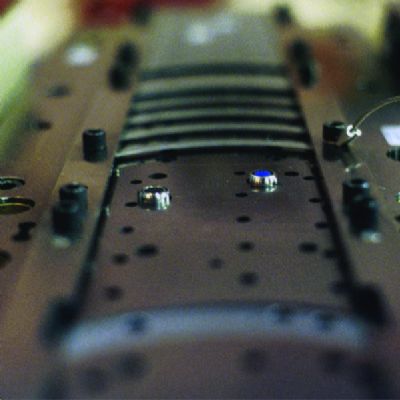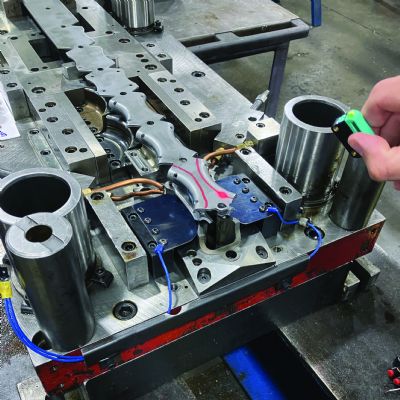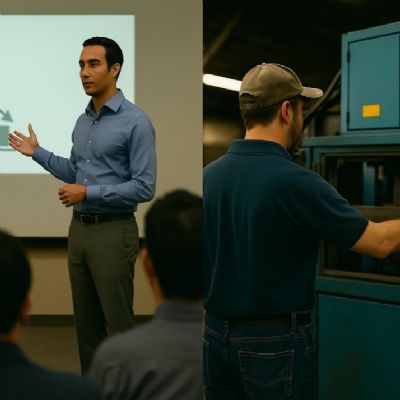Metalforming 4.0 Pervasive Sensing, Diligent Control
March 1, 2015Comments
Experts predict rapid and pervasive development of manufacturing-process digitization by 2020. Digitization—or automated access to data—is the centerpiece of the “Manufacturing 4.0” ideal factory. Data can flow vertically to and from the shop floor and the front office, to impact activities within purchasing, production-process planning and shipping. And, data can flow horizontally to and through customers and suppliers.
The focus here is on the vertical flow of data, much of which emanates from sensors placed throughout the plant—within machines and tooling, and via barcodes, QR codes and other labels. The data are then digested and analyzed to trigger process adjustments, advanced planning and scheduling functions.
In my editorial column from the January 2015 issue of MetalForming, I presented an ongoing nationally funded project to develop critical metalforming-related research and development projects. It will help propel our industry forward, forming the backbone of metalforming factories of the future—Metalforming 4.0. I wrote that during our initial focus-group meeting, sensor and control technology clearly took top priority.
A key discussion point centered on the notion that metalforming processes are subjected to numerous variables that can become obstacles to repeatability and quality. These variables include material properties among lots, sheet thickness throughout a coil and unpredictable tool wear. We discussed two approaches to handling such variability—minimize or eliminate the variables, or develop techniques to sense and gauge process variability, then adjust accordingly. Most in the room voted for the later direction, and that realization portends a move to pervasive sensing and heightened process control.
Press-control technology takes center stage in this issue of MetalForming, with senior editor Lou Kren’s interview of Link Systems’ engineer Dean Phillips. Phillips, who also attended the above-mentioned focus-group meeting, notes how press controls continue to evolve to provide the process data and process flexibility that metalformers crave.
So now, there’s no excuse for a stamper to be caught off-guard by tool wear that causes deteriorating part quality—you can install sensors that monitor tool wear. The data, relayed through the press control, will alert the maintenance team to step in before large portions of your shop floor become quarantine areas for parts turned to scrap.
So now, there’s no excuse for variability in sheet thickness throughout a coil to cause out-of-tolerance forms—you can send coil stock through thickness sensors, whose data will be relayed via the press control to trigger automatic adjustment of wedges in the die.
The move to pervasive sensing is nothing new—we see it in our everyday lives. Consider, for example, the modern automobile, which on average has 60 to 100 sensors on board—as much as 10 times the number of sensors per car in 2000. And, by 2020 the number of sensors per car is expected to more than double, to an average of 200.
These so-called “smarter cars” offer higher levels of performance than ever before, while providing never-before-seen safety and efficiency ratings. Those are exactly the goals that Metalforming 4.0 dictates. Get on board.Technologies: Pressroom Automation, Sensing/Electronics/IOT
Comments
Must be logged in to post a comment. Sign in or Create an Account
There are no comments posted. Sensing/Electronics/IOT
Sensing/Electronics/IOTPress Controls and Sensors Series Part 4: Die-Protection Tro...
Jim Finnerty February 9, 2025








